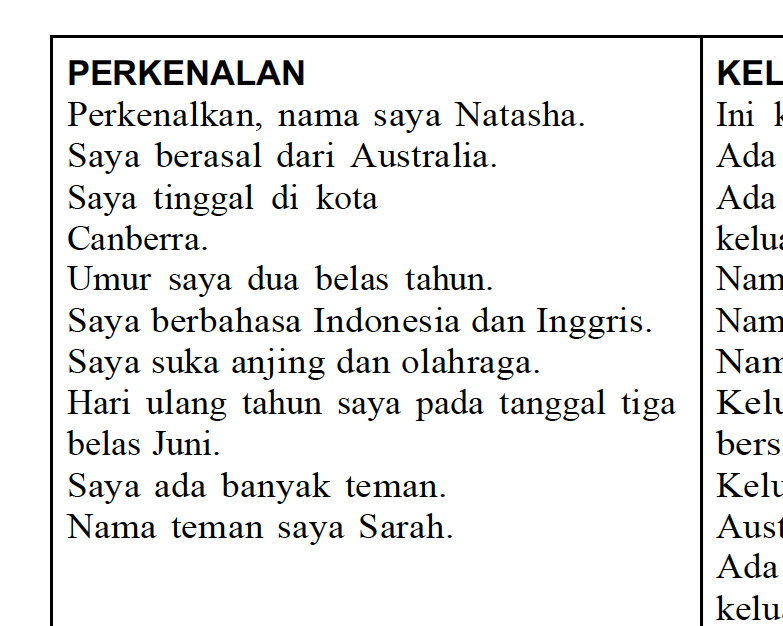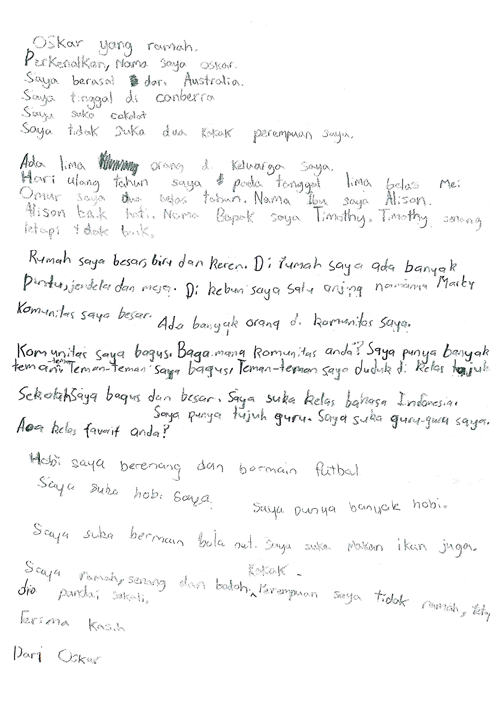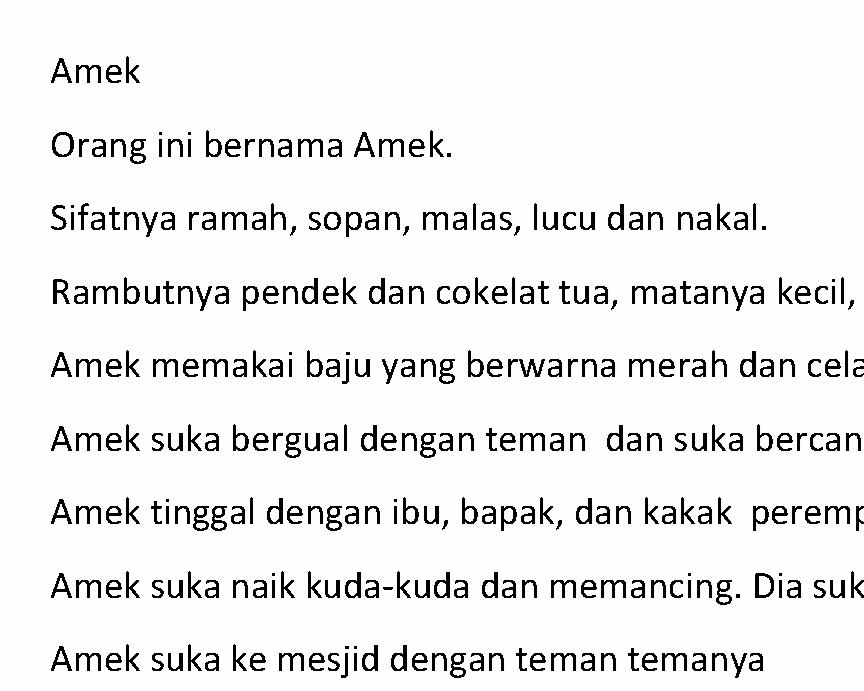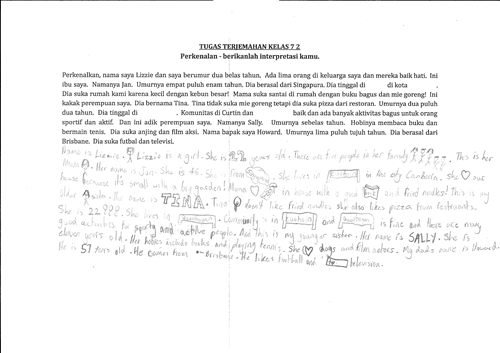Languages: Indonesian - Satisfactory - Years 7 and 8 (Year 7 entry)
Portfolio summary
This portfolio of student work shows that the student can share factual information and opinions (WS6) about personal and immediate worlds, including personal details, family (WS1, WS3), pets, friends, pastimes, school and neighbourhood (WS1, WS4, WS9). The student can interact with others orally (WS1, WS3) and in writing (WS1, WS2, WS3, WS4), ask and respond to questions (WS5, WS6, WS7) and express preferences (WS1, WS2, WS3, WS4, WS6, WS7, WS8, WS9). The student pronounces the vowels and consonants such as c (ch) and r (trilled) and combined sounds such as ng, au (WS1, WS3, WS6). The student uses formulaic expressions to sustain interactions. The student describes qualities of appearance (WS2), colour, character and condition (WS1, WS3, WS8) and identifies quantities (WS7) using numbers (WS4) and fractions (WS3). The student responds to and creates texts to describe real and imagined events and characters (WS2, WS3, WS4, WS6, WS9). The student creates personal, informative and imaginative texts incorporating textual features (WS3) such as salutations (WS1, WS6) and using cohesive devices such as conjunctions (WS2, WS3, WS4, WS5, WS7, WS8). The student forms sentences with subject-verb-object construction typically using simple base words (WS1, WS3, WS6), ber-verbs (WS1, WS4, WS5), and formulaic me-verbs (WS1, WS2, WS7, WS8). The student refers to others using pronouns (WS4, WS6, WS8) and uses these in possessive form (WS3), including using -nya (WS1, WS2, WS5, WS6, WS8). The student refers to events in time and place using prepositions (WS3, WS5, WS6, WS8) as well as time markers (WS2, WS7). The student predicts meaning based on knowledge of first language, text features and key words, including loan words from English (WS9). The student translates texts (WS9), identifying culture-specific language such as vocabulary related to cultural artefacts, environment, and practices (WS8).
The student knows that Indonesian is a language used by millions of Indonesians in daily life and that it is constantly changing. The student knows that Indonesian uses a base word and affix system (WS1, WS3, WS4, WS8, WS9) and uses metalanguage to describe and compare features and rules of sentence construction, including the use of possessives and adjectives. The student identifies textual features such as salutations (WS5), conversation markers and sequencing devices (WS9). The student knows that spoken and written forms of Indonesian can vary, for example, the elision of pronouns and some verbs in speech. The student identifies when language changes according to people and their relationships, such as informal language with friends and formal language with teachers and adults (WS5). The student makes connections between aspects of his/her own language and culture, such as particular expressions or practices, and compares these with Indonesian language and culture (WS8).








